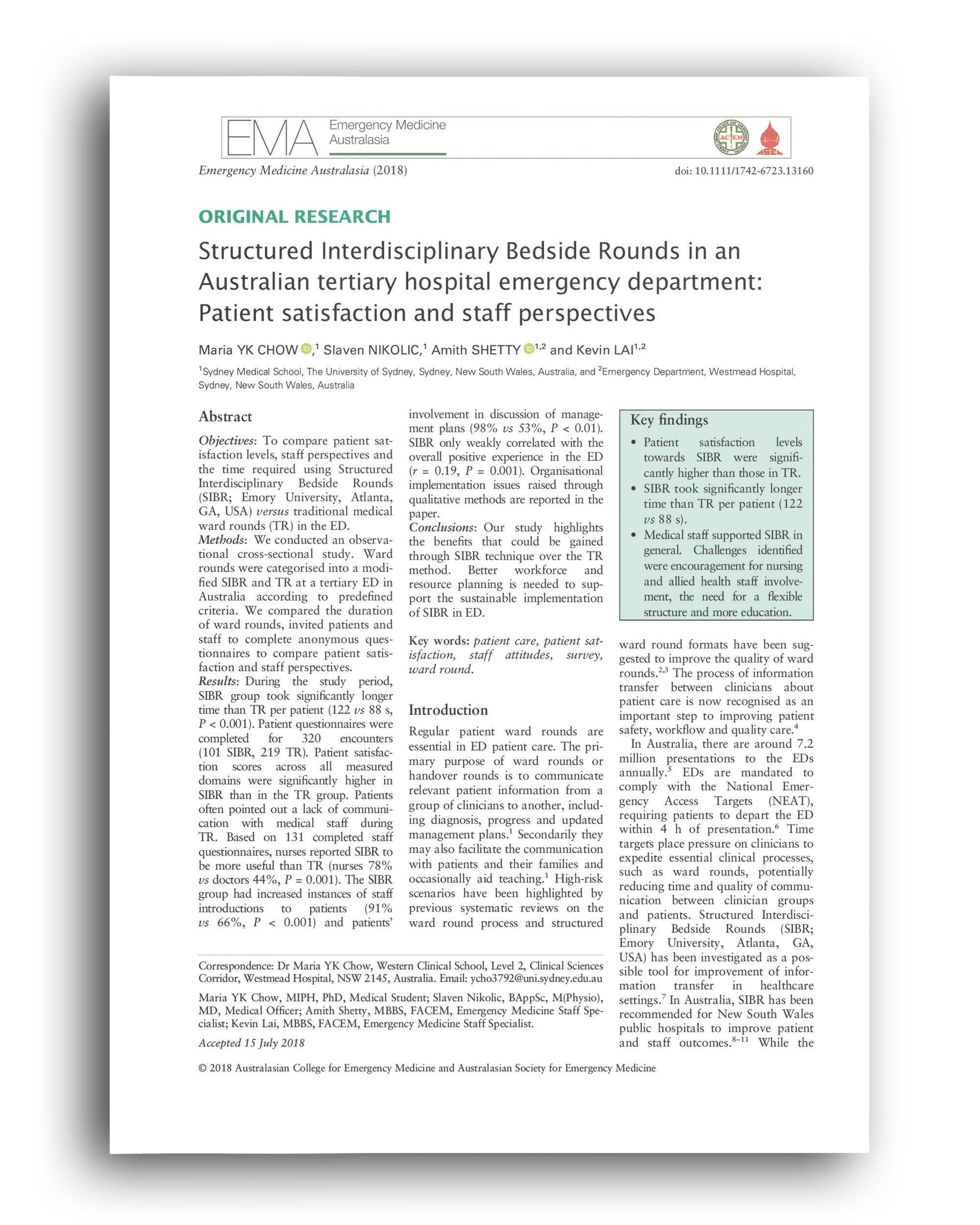Overview
In a study conducted at Westmead Hospital, Sydney, the implementation of Structured Interdisciplinary Bedside Rounds (SIBR) in an emergency department (ED) significantly improved patient satisfaction and staff perspectives compared to traditional ward rounds (TR).
Objectives
To compare patient satisfaction levels, staff perspectives, and the time required using Structured Interdisciplinary Bedside Rounds (SIBR) versus traditional medical ward rounds (TR) in the ED.
Methods
The study was an observational cross-sectional design conducted at a tertiary ED in Australia. Ward rounds were categorized into SIBR and TR according to predefined criteria. The study involved:
Patient Satisfaction Study
• Completed by 320 patients who met the inclusion criteria.
Staff Perspectives Study
• Completed by 131 ED clinical staff members.
Results
Patient Satisfaction
• Higher across all measured domains in the SIBR group compared to the TR group.
• Confidence in ED team: 96% (SIBR) vs. 80% (TR)
• Understanding treatment plans: 75% (SIBR) vs. 62% (TR)
• Overall ED experience: 95% (SIBR) vs. 90% (TR)
Staff Perspectives
• Nurses reported SIBR to be more useful than TR (78% vs. 44%).
• Increased staff introductions to patients: 91% (SIBR) vs. 66% (TR)
• Patient involvement in management plans: 98% (SIBR) vs. 53% (TR)
Duration
• SIBR rounds took significantly longer per patient (122 seconds) compared to TR (88 seconds).
Conclusion
Structured Interdisciplinary Bedside Rounds (SIBR) in the emergency department led to higher patient satisfaction and improved staff perspectives compared to traditional ward rounds. However, SIBR took longer to complete, indicating the need for better workforce and resource planning to support sustainable implementation in the ED.
I hope you enjoyed reading these strong results. Unit outcomes like these are achievable within 3 to 6 months using a seasoned implementation methodology:
- skillful project management
- smooth training and launch, and a
- long-term partnership for sustainability.
One option to achieve similar results is to engage our 1Unit experts. Backed by 15 studies like this one, our work has received awards from The Joint Commission, CMS, Clinical Excellence Commission, IHI, BMJ, and the Society of Hospital Medicine.
Whether your unit(s) have current multidisciplinary rounds or not, our experts can guide your unit leaders to launch and sustain the best interdisciplinary teamwork and communication you’ve ever seen on a hospital ward.
This is not some ivory tower theory. Our methods have been toughened and refined worldwide. Everything we teach has been carefully tested over more than a decade, so we know it works.
Connect with us if you’d like the “Easy Button” to steadily reduce harm events, discharge delays, and patient and staff dissatisfiers.
Liam Chadwick, PhD



